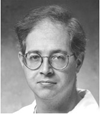Gawande in his recent checklist book discusses the role of emergency checklists for pilots. We need this approach for medical emergencies. Change the culture from one expecting caregivers to pridefully remember all aspects of managing a given emergency. Create a set of the first five things that need done for common and uncommon emergencies. For example for apparent anaphylaxis: 1. Give oxygen, 2, apply monitors, 3. Give epi, 4. Give H2 antagonists, 5. Call for Help. Put on all PCs in the health system. Make an emergency checklist manual. Make a smartphone app. Sell the book and sell the app.
Larry Chu and colleagues at the Stanford AIM lab are proposing just that. Modeling after the emergency checklists that pilots use for emergencies, they are introducing the notion that we in anesthesia and critical care should do the same. Evidence for this notion was recently published in the NEJM: Arriaga AF, etal: Simulation-Based Trial of Surgical-Crisis Checklists. N Engl J Med 2013;368:246-53.
You can get the cognitive aids by visiting Anesthesia Illustrated or clicking on this link (http://www.cognitiveaids.org).
 Mitch Keamy is an anesthesiologist in Las Vegas Nevada
Mitch Keamy is an anesthesiologist in Las Vegas Nevada
 Andy Kofke is a Professor of Neuro-anesthesiology and Critical Care at the University of Pennslvania
Andy Kofke is a Professor of Neuro-anesthesiology and Critical Care at the University of Pennslvania
 Mike O'Connor is Professor of Anesthesiology and Critical Care at the University of Chicago
Mike O'Connor is Professor of Anesthesiology and Critical Care at the University of Chicago
 Rob Dean is a cardiac anesthesiologist in Grand Rapids Michigan, with extensive experience in O.R. administration.
Rob Dean is a cardiac anesthesiologist in Grand Rapids Michigan, with extensive experience in O.R. administration.
Comments